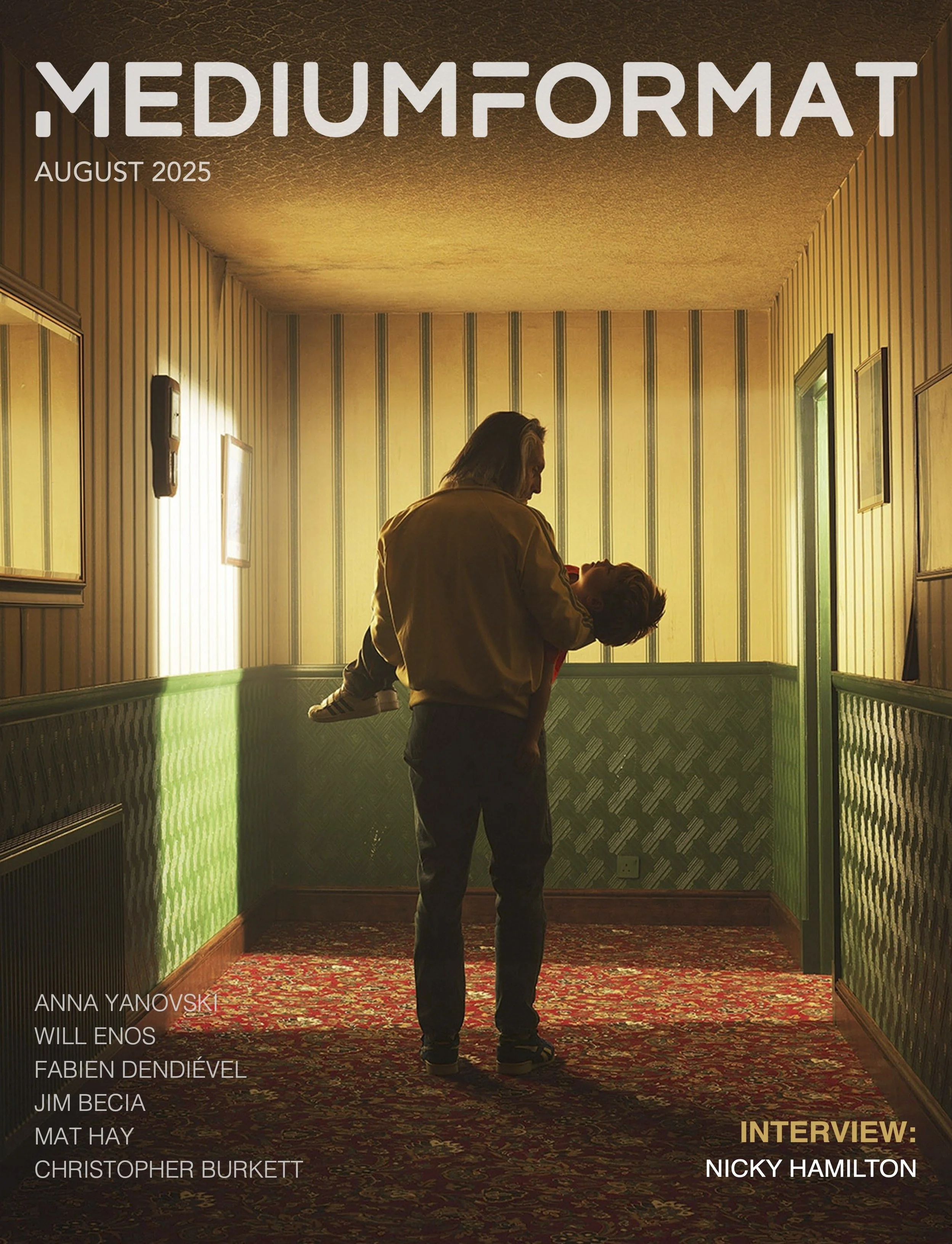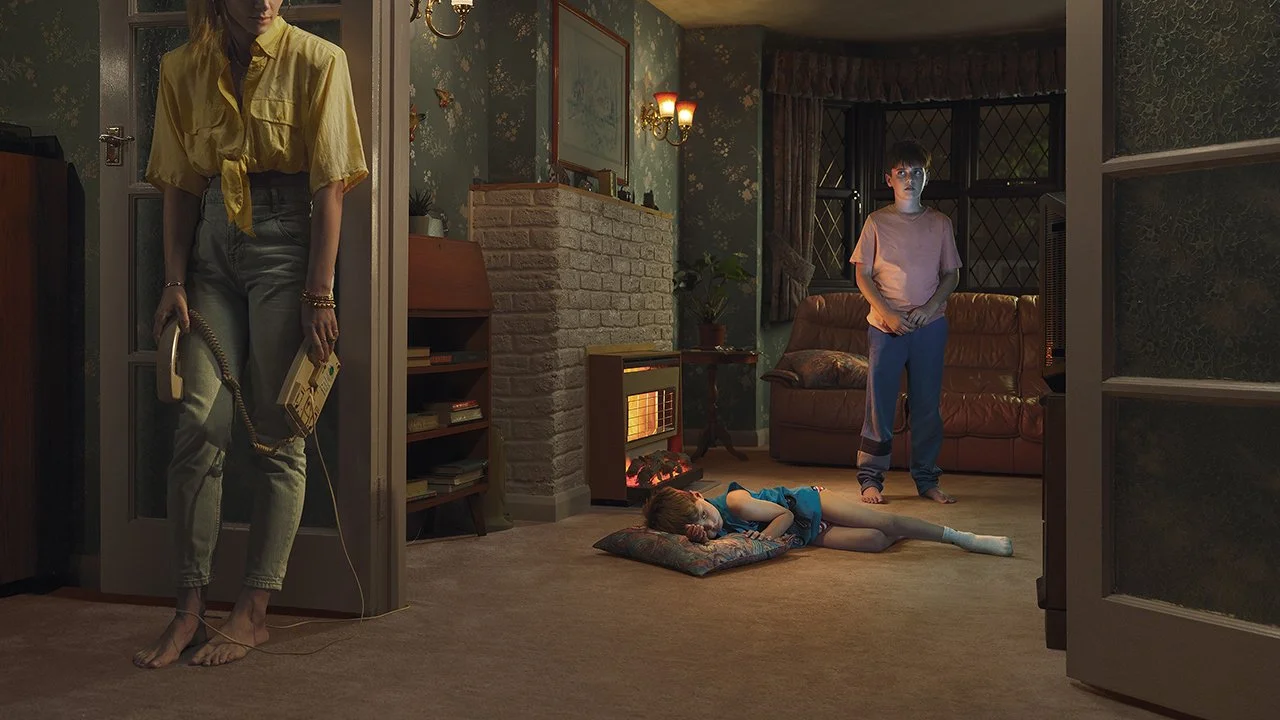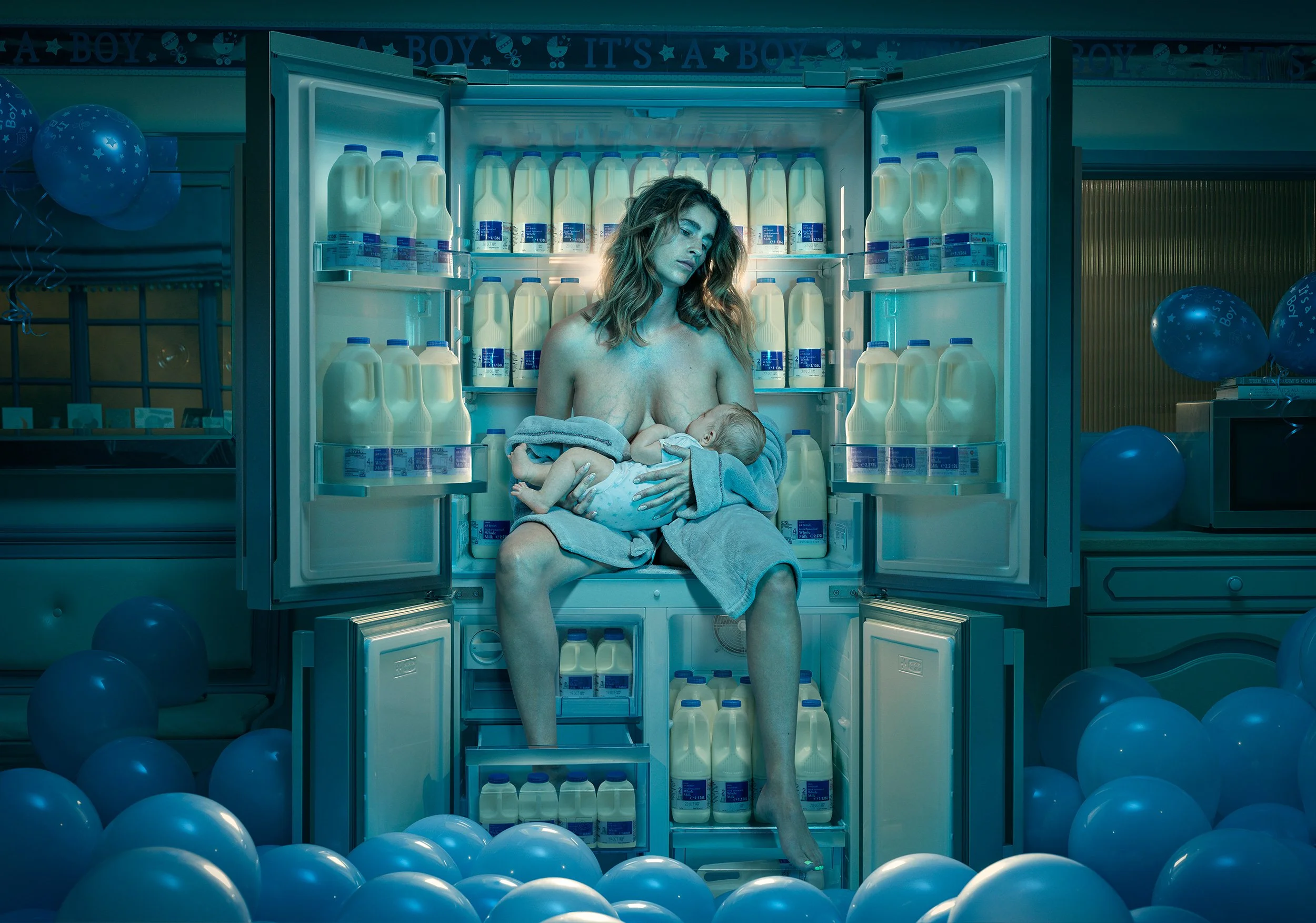Interview in Medium Format Magazine
In an exclusive interview for Medium Format magazine, Nicky Hamilton shares a candid insight into his unique creative process and where it all started, with a little look back at some of his most memorable projects.
What came first - film or photography? How did Nicky Hamilton find his way into the craft?
“Photography came first for me, but film was always in the background as a huge influence. Fourteen years ago, I was Head of Art at M&C Saatchi, which gave me the chance to collaborate with some incredible photographers and directors. That’s really when I fell in love with image-making, both still and moving. At the time, I imagined I’d become a director, as my passion has been emotional storytelling, but I found myself increasingly drawn to the still image. Photography gave me the chance to create cinematic tableaux - single frames that carried the weight and atmosphere of an entire story. That balance of narrative and composition is what ultimately pulled me into photography.”
What was the single best decision when you started? Was there one you regretted?
“The best decision I made early on was being honest with myself about the time it would take to learn the craft properly - especially lighting. When I left M&C Saatchi, I gave myself three years to purely study photography and build a portfolio I was proud of, and that commitment set the foundation for everything that followed. If I have a regret, it’s not shooting motion at the same time. In those three years, I built 12 handmade sets and poured everything into the still images. Filming on those sets would have allowed me to create a short film that echoed the stills project The Lonely Man - a missed opportunity to expand the story beyond a single frame.”
You were the Head of Art at the ad agency M&C Saatchi. What is one lesson from this period you found the most useful to you as a photographer who now works with such agencies?
“One of the biggest lessons I carried over from my time at M&C Saatchi was the value of pre-visualisation. For a lot of my personal work now, I use cinema 4D to build the set, place the talent, and light the scene before we ever get on set. This becomes a vital tool for agencies and clients in pre-production, allowing us to work through the details and make sure everyone is aligned before the shoot. I first encountered this process on large-scale TV productions, and I loved how efficient and collaborative it made the workflow. But beyond efficiency, it also feeds into my photographic style of cinematic storytelling. Pre-visualising allows me to shape the mood, the light, and the narrative of an image long before the camera is lifted, which means the final frame feels purposeful, not accidental.”
Your movie poster portfolio is stellar. Which movie or a movie series was the first you had the chance to photograph?
“The first was job for ITV - a very dark true crime drama called Des, about a serial killer. It was a tricky one to land, as I didn’t yet have any celebrity talent in my portfolio, but the client connected with my personal work. They felt it reflected the tone and style they wanted for the key art, which ultimately won me the job. That project became a real turning point. It opened the door to more TV campaigns and gave me the chance to establish myself in that space”
How much do you direct your models in terms of pose, facial expression, etc?
“For my TV and film work, I approach it much much like directing a scene. I’ll learn about the characters and then give performance cues based on moments from the script. Rather than rigidly directing poses, I create a space for the actors to preform in - after all, they’re actors, not models.” This way, their expressions and body language feel authentic to the character, and the image captures a sense of lived-in storytelling. With commercial work it can be a little different. Often I’ll give more structured direction body language, eye line, and expression to ensure we’re delivering the exact emotion or message that the brand needs. But even then, I try to keep things natural by encouraging small actions or interactions so the performance feels real rather than overly staged.”
You have worked on many entertainment projects. Could you please give us an idea of what it is like to work on this type of project? Which one is the most memorable for you?
“I love shooting key art campaigns. They always demand bold, cinematic lighting to reflect the tone of the show, which makes them hugely enjoyable to craft. The challenge is that is that time with talent is usually very limited - - sometimes only 15 minutes - so the shoots can feel like an adrenaline rush, especially when there are multiple creative options to capture in such a short window. It’s hard to single out one project above the rest, but there was a period last July that really stood out: three countries in 6 days, shooting three very different shows for Netflix, Sky and Paramount+. Each had it’s own challenges and atmosphere but together they were a perfect example of why I love this kind of work. It was fast-paced, collaborative, and very rewarding”
Can you please share your process of coming up with ideas? What was the most unexpected visual discovery you have ever made?
“For me, a great idea is one that keeps returning, almost like a quiet reminder to pursue it. One of the most unexpected discoveries came from an idea I had around postnatal depression, something my wife experienced after our first child. I spent years trying to find the right way to express it, and then one day, a friend of mine, Scarlett, who just had a baby, looked at me while breastfeeding and asked, “When will it stop?” That moment unlocked everything. A week later we created Mother’s Milk. Scarlett sat inside a fridge surrounded by bottles of milk, balloons, and celebration banners, yet with an expression that was despondent and withdrawn. It became a surreal but honest way to capture the gap between expectation and reality. That experience taught me to trust the process. If an idea keeps coming back, it will eventually find its moment, its muse, and form. My role is to stay open and recognise when the universe delivers that spark.”





